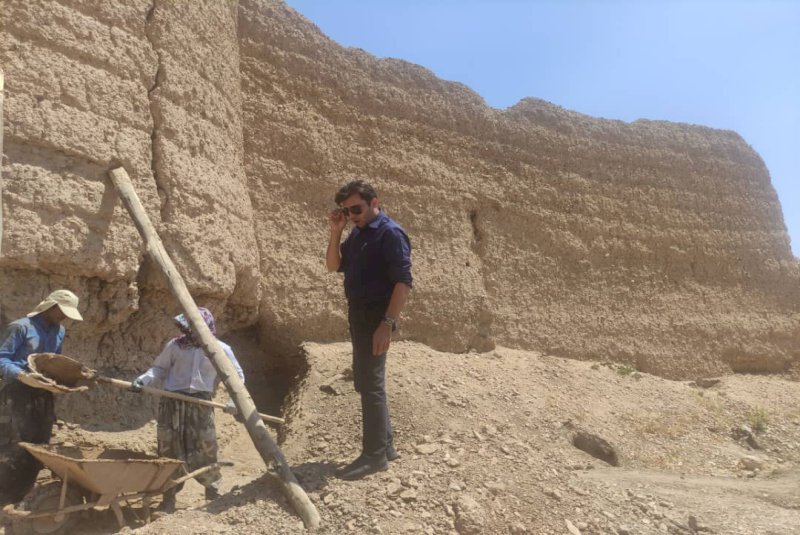Ramparts of Shahrud undergo urgent restoration

TEHRAN—Restoration work has begun again on the ruins of the centuries-old ramparts that once protected the city of Shahrud in north-central Iran.
“The second phase of an urgent restoration work has commenced on Shahrud ramparts,” Shahrud’s tourism chief said on Tuesday.
“Foundation reinforcement, removal of the loose soil, repair of cracks, and the renewal of thatched reeds will be carried out in this season of restoration,” Morteza Nazari said.
“Inscribed on the national cultural heritage list, the earthen ramparts date from the Qajar era,” the official said.
Shahrud is situated in Semnan province, which is home to many ancient and prehistorical sites with Tepe Hesar being amongst the most important ones. Tepe Hesar was first excavated in 1925 and 1931-1932 when the construction of the Trans-Iranian Railway cuts through the main mound. It was one of the first Chololithic and Bronze Age excavations in this area, and the stratigraphy has been very important to date at similar sites.
In 2006, traces of eight-thousand-year-old settlements were found at the site of Deh Kheyr, situated in Shahrud plain, 15 kilometers from the modern city of Shahrud. The discoveries included ovens, craft workshops, and other evidence of settlements.
Archeological excavations in different parts of Shahrud plain indicate the existence of villages in this area during the 7-5 millennium BC. Shahrud was merely a village before the reign of Fath Ali Shah of the Qajar dynasty, with two old castles and a small farm named "Shabdary". The surrounding areas, however, such as Biarjomand, Miami and Bastam do have a distant history.
From the Caspian in the northwest to Baluchistan in the southeast, the Iranian plateau extends for close to 2,000 km. It encompasses the greater part of Iran, Afghanistan, and Pakistan west of the Indus River, containing some 3,700,000 square kilometers. Despite being called a “plateau”, it is far from flat but contains several mountain ranges, the highest peak being Damavand in the Alborz mountain range at 5610 m, and the Dasht-e Loot east of Kerman in Central Iran, falling below 300 m.
The first well-documented evidence of human habitation is in deposits from several excavated cave and rock-shelter sites, located mainly in the Zagros Mountains of western Iran and dated to Middle Paleolithic or Mousterian times (c. 100,000 BC). A 2019 study published by the Journal of Human Evolution suggests that Neanderthals were roaming over the Iranian Zagros mountain range between 40 to 70 thousand years ago. Neanderthals lived before and during the last Ice Age of the Pleistocene in some of the most unforgiving environments ever inhabited by humans. They developed a successful culture, with a complex stone tool technology, that was based on hunting, some scavenging, and local plant collection. Their survival during tens of thousands of years of the last glaciation is a remarkable testament to human adaptation.
AM
Leave a Comment